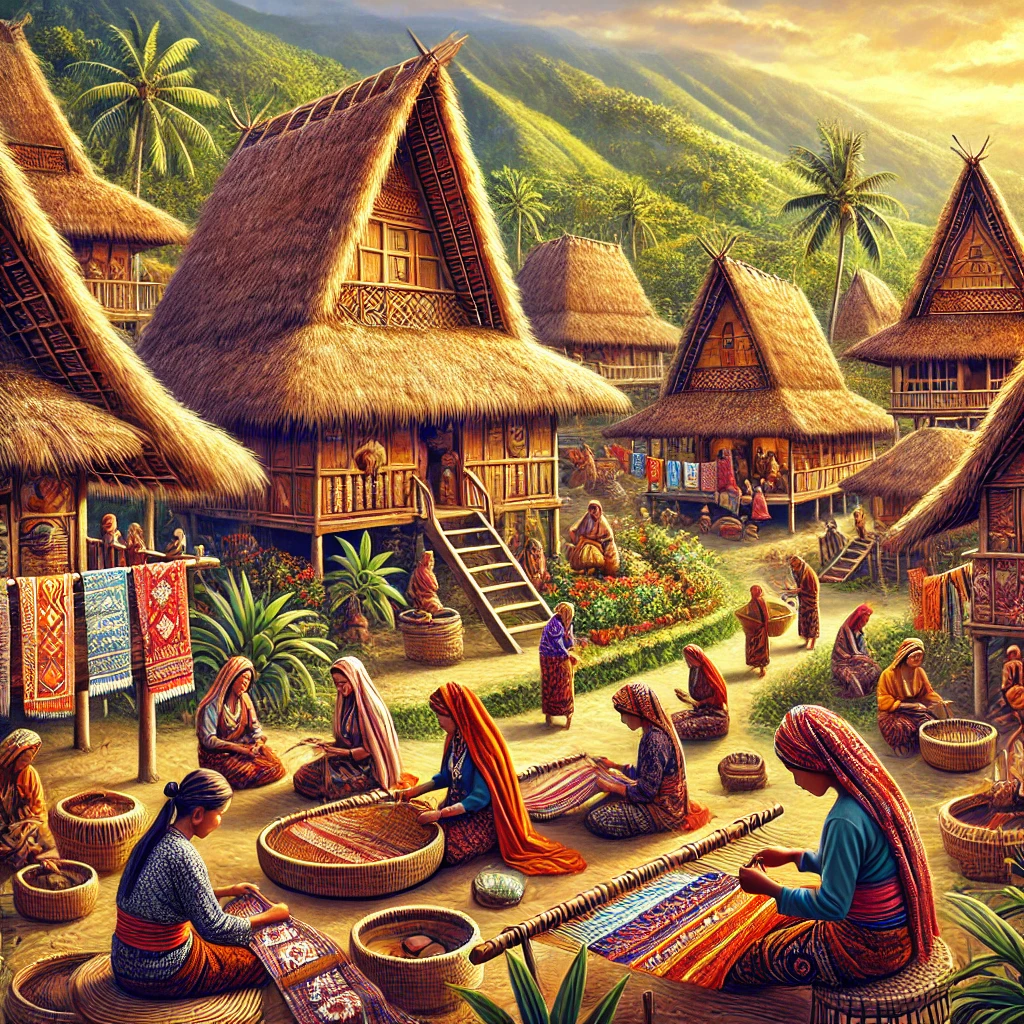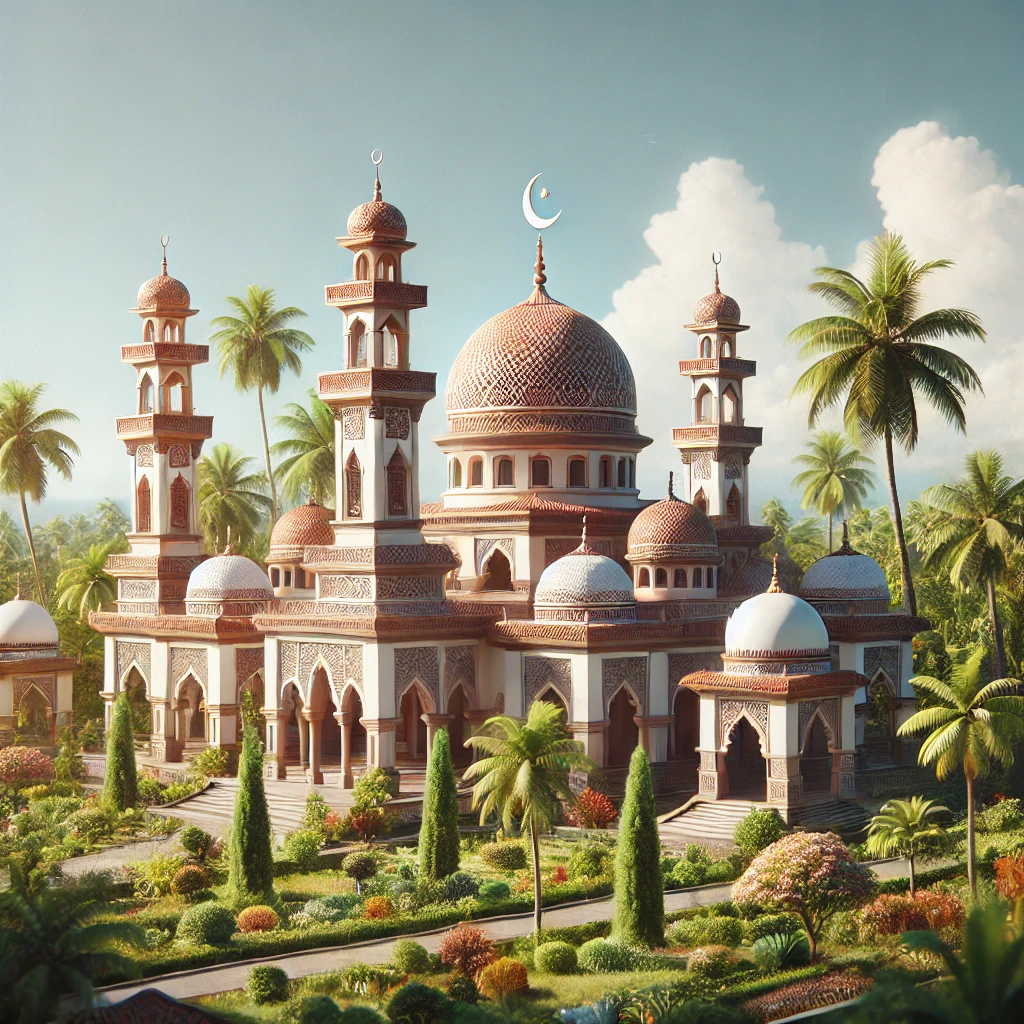
While Kuta Lombok is known for its stunning beaches and surf spots, it is also home to a deep and vibrant cultural heritage. The island of Lombok is predominantly inhabited by the Sasak people, who make up about 85% of the population. Their culture, customs, and way of life have been preserved for generations, offering travelers a chance to experience authentic Indonesian traditions. From traditional villages to unique festivals, this guide explores the local culture and history that define Kuta Lombok.
The Sasak People: Guardians of Lombok’s Heritage
The Sasak people are the indigenous inhabitants of Lombok. They are known for their distinct language, customs, and traditional architecture, which have been passed down through generations. Most Sasaks are Muslim, but their culture is a blend of Islamic practices and older animistic traditions that date back to pre-Islamic times.
Sasak Traditions and Customs
- Lombok’s Traditional Villages: In Kuta Lombok and the surrounding areas, you’ll find traditional Sasak villages where life has changed little over the centuries. These villages, like Sade and Ende, feature bale houses made from bamboo, wood, and thatched roofs. Visiting these villages offers insight into the local architecture, craftsmanship, and agricultural practices.
- Weaving: Songket weaving is an essential part of Sasak culture. Using traditional looms, Sasak women weave intricate patterns into cloth, which is used for ceremonial attire. Villages like Sukarara are famous for their weaving traditions, and visitors can see artisans at work and purchase handmade textiles.
Cultural Etiquette
When visiting traditional villages, it’s important to dress modestly and respect local customs. Greetings such as “Selamat pagi” (Good morning) or “Selamat sore” (Good afternoon) are appreciated by locals. Asking permission before taking photos of people, especially in traditional settings, is also considered respectful.
Exploring Traditional Sasak Villages
For a deep dive into the history and daily life of the Sasak people, visiting a traditional village is a must. These villages offer a glimpse into Lombok’s past, where customs and way of life have remained largely unchanged.
Sade Village
Sade Village, located about 20 minutes from Kuta Lombok, is one of the most well-preserved traditional Sasak villages. The village is home to around 700 residents, all living in houses made from bamboo, wood, and thatched roofs. Sade is famous for its traditional weaving, and visitors can witness the process firsthand, with many opportunities to buy beautifully crafted textiles.
- What to Expect: In Sade, you’ll see traditional Sasak homes, known as Bale Tani, which have been built in the same way for hundreds of years. The people of Sade still practice many ancient traditions, including the art of weaving and traditional Sasak dances that are performed during special ceremonies.
- Insider Tip: While wandering through Sade, you’ll be welcomed warmly by locals, but be prepared to encounter offers to buy handicrafts. This is an important source of income for the village, and purchasing these goods directly supports the community.
Ende Village
Ende Village, a smaller and less commercialized village than Sade, offers an even more authentic experience. The houses here are made in the same traditional style, and the people maintain a strong connection to their animistic roots, despite the dominant Islamic faith.
- What to Expect: Ende’s quiet atmosphere provides an opportunity to explore without the crowds. You’ll get a closer look at the daily routines of the Sasak people, including farming and weaving.
- Insider Tip: Engage with the locals to learn more about the spiritual beliefs that are still practiced alongside Islam, such as honoring spirits and ancestors.
Local Festivals and Ceremonies
Lombok is home to several festivals and ceremonies that reflect the island’s rich cultural and religious heritage. Participating in or witnessing these events offers travelers a deeper understanding of the Sasak way of life.
Bau Nyale Festival
The Bau Nyale Festival is one of the most significant cultural events in Lombok, particularly in the Kuta region. The festival is held annually during the rainy season (around February or March) and celebrates the legendary Princess Mandalika, a mythical Sasak princess who is said to have transformed into Nyale (sea worms) to avoid conflict over her hand in marriage.
- What Happens: Locals and visitors gather on the beaches of Kuta to catch the Nyale sea worms, which are believed to bring good luck and fertility. The festival is accompanied by traditional music, dance, and rituals. People often camp on the beach the night before to take part in the festivities early in the morning.
- Insider Tip: If you want to experience the Bau Nyale Festival, make sure to book your accommodation well in advance, as Kuta becomes a bustling hub of activity during the event.
Peresean (Stick Fighting)
Another cultural tradition is Peresean, a form of stick fighting that has its roots in Sasak warrior training. Peresean is often performed during festivals or ceremonies, where two fighters (called pepadu) use rattan sticks and small shields. The fight is supervised by a referee known as pakembar, and it’s seen as a test of strength, endurance, and honor.
- Where to Watch: Peresean is commonly staged during festivals like Bau Nyale and other regional celebrations. It’s a thrilling spectacle that showcases the physical prowess of the participants.
- Insider Tip: While Peresean is intense, it’s a ceremonial sport with deep cultural significance, so show respect during the event. It’s not about violence but about honor and tradition.
The Influence of Islam in Lombok

Although the Sasak people have animistic roots, Islam is the dominant religion in Lombok, and its influence can be seen throughout the island. Known as the “Island of a Thousand Mosques,” Lombok is dotted with mosques, and the call to prayer echoes across the island five times a day.
Islamic Traditions in Kuta Lombok
- Mosques in Every Village: Every village in Lombok has a mosque at its heart. In Kuta Lombok, you’ll hear the adhan (call to prayer) throughout the day. Visitors should be mindful of this, especially during Friday prayers or Ramadan, when many businesses may adjust their hours.
- Local Customs: Although Kuta Lombok is a tourist-friendly area, it’s still important to respect local dress codes, particularly when visiting religious sites or traditional villages. Women should cover their shoulders, and men should avoid wearing shorts when away from the beach.
Ramadan in Lombok
Ramadan, the Islamic holy month, is a significant time in Lombok, observed by the majority of the Sasak population. Ramadan typically falls between March and April (though the exact dates change each year based on the Islamic lunar calendar). During this month, you’ll notice a quieter atmosphere during the day, as most locals will be fasting from dawn until sunset.
- Restaurants and Tourism: While many restaurants and businesses in tourist areas like Kuta Lombok remain open, it’s important to be mindful and avoid eating or drinking in public during daylight hours out of respect for those observing the fast.
- Nighttime Celebrations: After sunset, the community breaks its fast, and the island comes alive with festivities, meals, and prayers. It’s not uncommon for celebrations and gatherings to continue until late at night, with noise and activities sometimes carrying on until 2 a.m. or later. While this is an integral part of the Ramadan experience, it’s good for travelers to be aware that the lively nighttime atmosphere might disrupt sleep, especially if you’re staying near a mosque or in a local village.
- Travel Tip: If you’re visiting during Ramadan, embrace the cultural experience by joining in the evening festivities, such as the communal meal known as iftar (the breaking of the fast). However, it’s also helpful to pack earplugs or choose accommodations a bit further from the town center or mosques if you’re sensitive to noise at night.
Lombok’s Unique Architecture: Bale Houses and Mosques
One of the most distinctive features of Lombok’s culture is its traditional architecture. The bale houses of the Sasak people are still found in many villages and are a defining feature of Lombok’s landscape.
Bale Tani: Traditional Sasak Homes
Bale Tani, the traditional homes of the Sasak people, are built using natural materials like bamboo, mud, and thatched roofs. These houses are typically raised on stilts to protect against flooding and to allow for better ventilation in the tropical heat.
- How They’re Built: The process of building a bale is considered sacred and follows specific rituals. Each part of the house has symbolic meaning, with the layout reflecting the Sasak family structure.
- Where to See Them: You can see these houses in traditional villages like Sade and Ende, where the architecture remains largely unchanged over the centuries.
Islamic Mosques
Lombok’s mosques vary in design, with older mosques reflecting traditional Sasak styles, while newer ones incorporate modern Islamic architecture. The Mayura Water Palace Mosque and the Masjid Bayan Beleq are examples of historic mosques that hold significant cultural value.
Cultural Etiquette and Tips for Visitors
Understanding and respecting local customs will enhance your experience in Kuta Lombok. Here are a few tips to keep in mind:
- Ask Before Photographing: While the Sasak people are welcoming and proud of their culture, it’s always respectful to ask permission before taking photos, especially in traditional villages or during ceremonies. This shows respect for local customs and avoids making anyone uncomfortable.
- Learn Basic Phrases: Speaking a few words of Bahasa Indonesia can go a long way in building rapport with locals. Simple greetings like “Selamat pagi” (Good morning) or “Terima kasih” (Thank you) are always appreciated.
- Respect Religious Practices: If you visit during Ramadan or hear the adhan (call to prayer), it’s respectful to show consideration by lowering your voice, refraining from eating or drinking in public, and observing any local customs that might be in place.
The Future of Kuta Lombok’s Culture
Kuta Lombok is rapidly growing as a tourist destination, but the Sasak people are working hard to preserve their traditions amidst the changing landscape. Many local initiatives focus on maintaining traditional crafts, architecture, and cultural ceremonies, while also embracing tourism as a way to showcase the richness of Sasak culture to the world.
- Eco-Tourism and Responsible Travel: Increasingly, eco-tourism efforts are encouraging travelers to engage with Lombok’s culture in a responsible way. This includes visiting traditional villages, buying locally made handicrafts, and choosing community-based tours that directly support the local people.
- Supporting Local Artisans: By purchasing handmade woven textiles, pottery, or other locally crafted goods, visitors can help sustain traditional livelihoods and preserve important cultural practices.
Insider Tip: Look for authentic experiences that allow you to engage with the Sasak culture in a meaningful way, such as weaving workshops, cooking classes, or village homestays. These activities provide insight into local life and help preserve traditions.
Plan Your Cultural Journey in Kuta Lombok
Whether you’re drawn to the traditional Sasak villages, the unique festivals like Bau Nyale, or the stunning Islamic architecture, the cultural richness of Kuta Lombok is an unforgettable part of the island’s appeal. While enjoying the beaches and surf is a must, diving deeper into Lombok’s heritage will give you a true appreciation for the history and traditions that make this region special.
Start planning your cultural journey today by visiting Sasak villages, experiencing local ceremonies, and exploring the historical significance of this beautiful corner of Indonesia.
Related Posts
How to Get to Lombok Indonesia
This Indonesian island, is a gem in the Indonesian archipelago, renowned for its stunning beaches, lush landscapes, and access to […]
Experience the Best of Ekas Lombok: A Coastal Paradise
Tucked away on the southeastern coast of Lombok, Ekas Lombok is a hidden gem known for its pristine beaches, calm […]
Explore the Enchanting Beauty of Lombok Nature
Lombok, located in Indonesia’s West Nusa Tenggara, is a haven for nature lovers. With lush green landscapes, towering mountains, and […]
How to Get your Visa Extension in Lombok
Lombok’s breathtaking beaches, lush greenery, and welcoming culture make it a dream destination for travelers. If you’re planning to stay […]
Lombok International Airport: Your Gateway to Paradise
Lombok International Airport (LOP), also referred to as Praya Airport, is the primary gateway to the beautiful Indonesian island of […]
Grab in Lombok 2025: The Ultimate Transportation Guide for Travelers
Navigating Lombok can be challenging for visitors. While Grab is available on the island, its service varies dramatically between regions. […]
